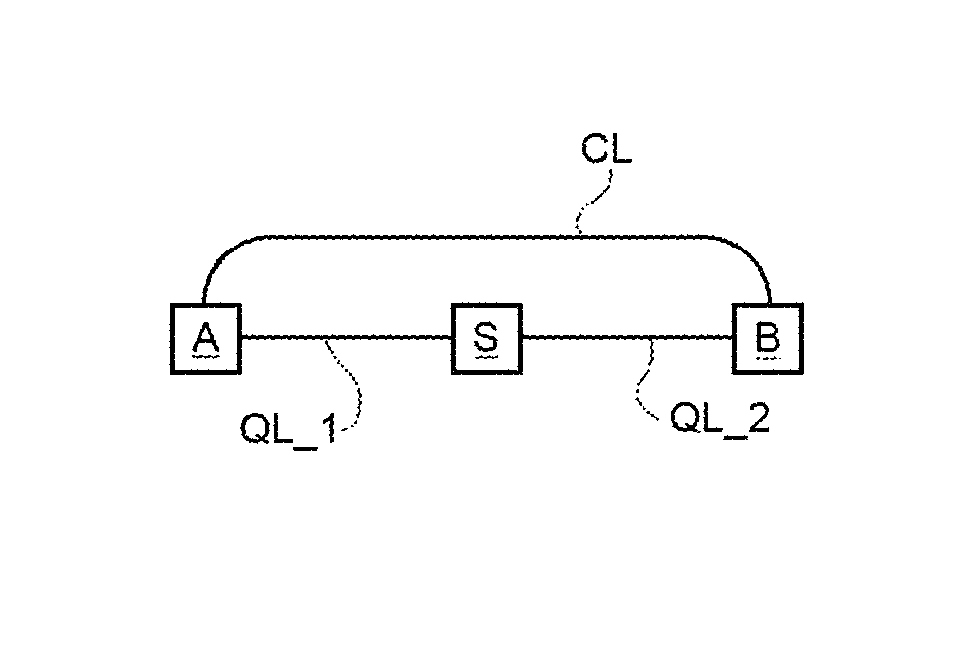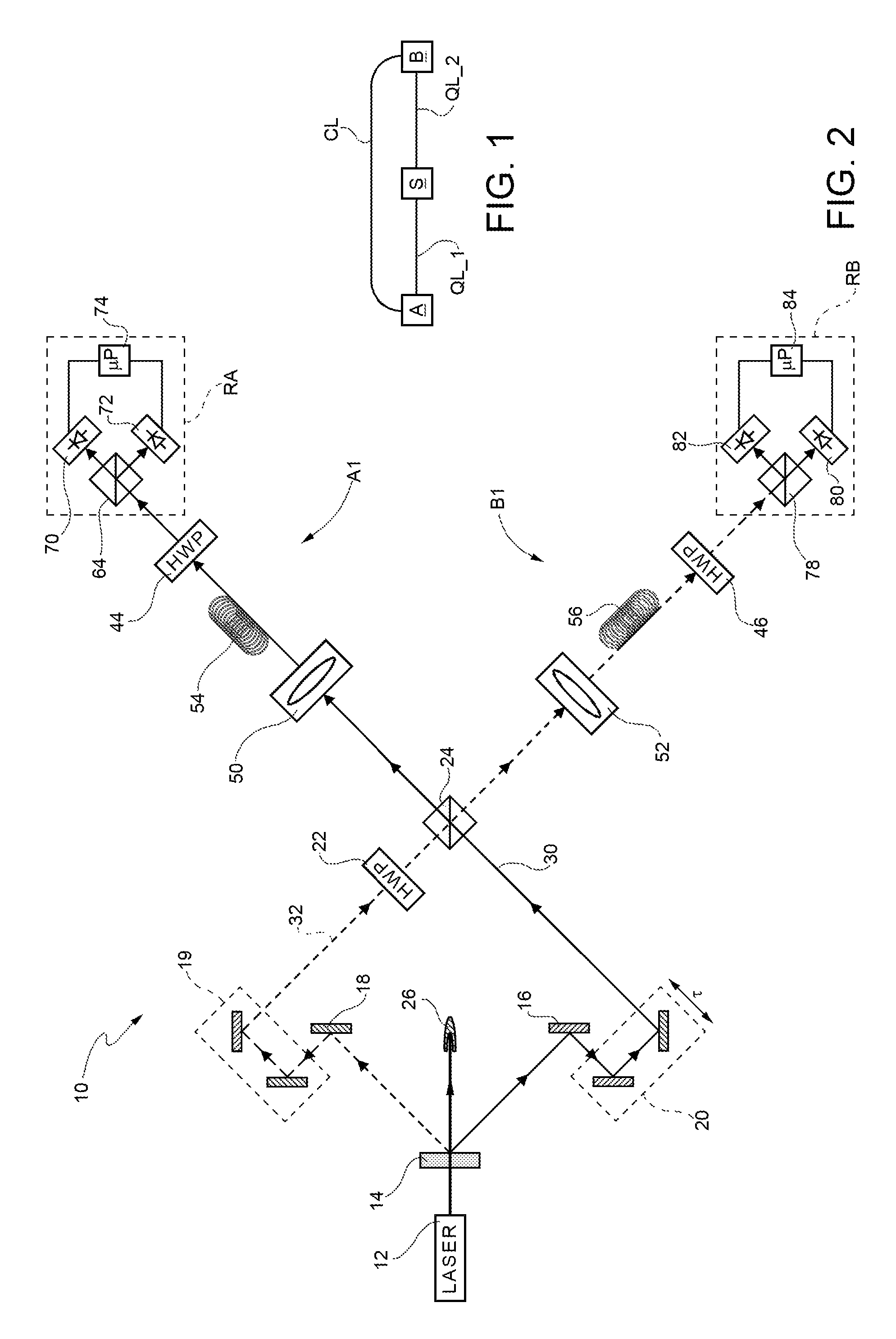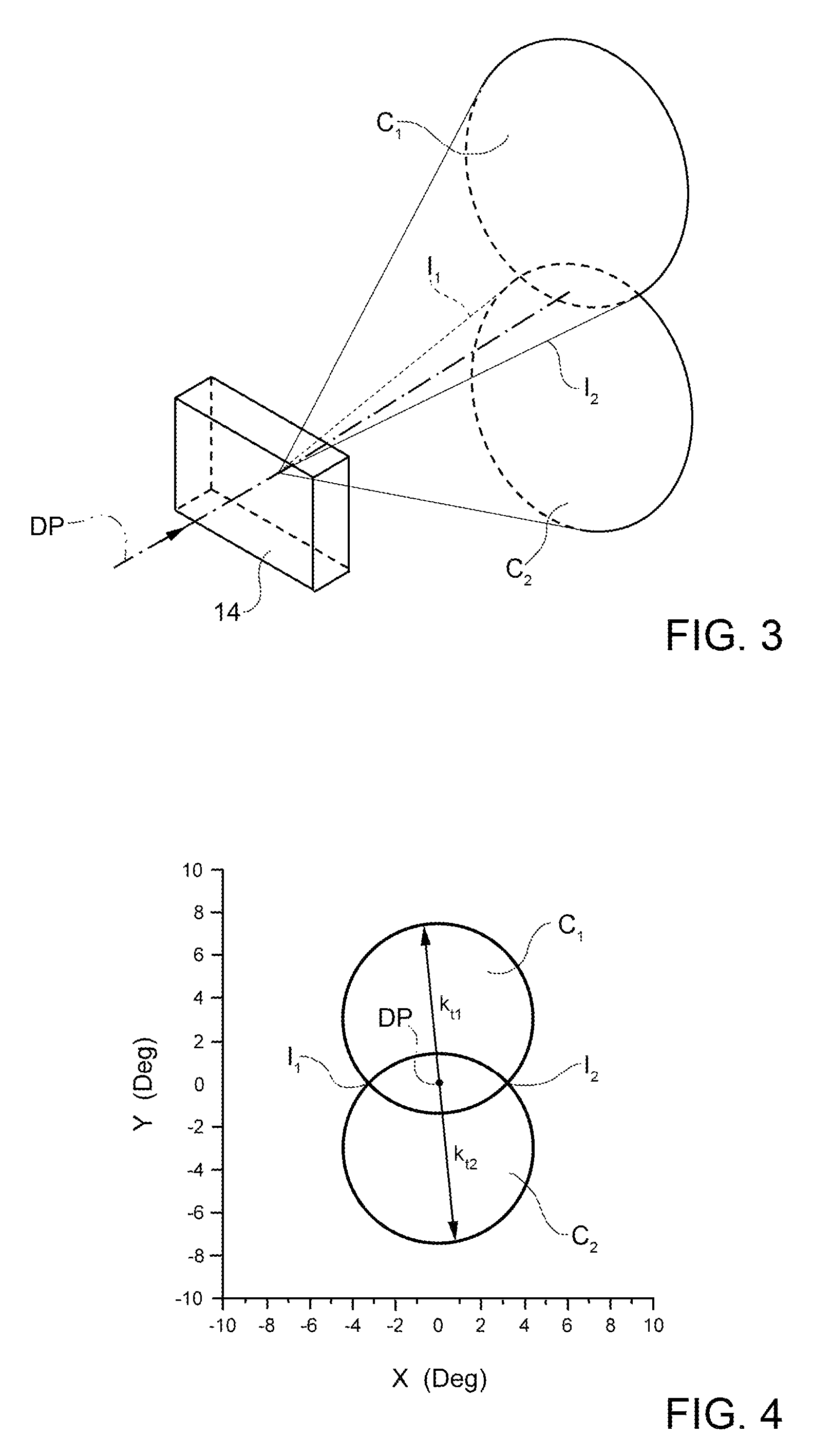Method and system for estimating the noise of a two-photon entangled state
a two-photon entanglement and noise technology, applied in the field of methods and systems for estimating the noise of a two-photon entanglement state, can solve the problems of noise also including so-called polarization dependent losses (pdl), traditional cryptographic key distribution protocols do not allow detecting whether, and traditional cryptographic key distribution protocols do not allow discovering whether
- Summary
- Abstract
- Description
- Claims
- Application Information
AI Technical Summary
Benefits of technology
Problems solved by technology
Method used
Image
Examples
examples regarding
[0160 the first and the second elementary substring are shown in FIG. 5.
[0161]Each of the first and the second processing unit 114 and 124 also performs the following operations:[0162]selects the bits of the first uncorrelated substring determined with (φ=π / 8, forming a third elementary substring;[0163]selects the bits of the second uncorrelated substring determined with θ=0°, forming a fourth elementary substring;[0164]calculates the normalized coincidence counts N1CC2A+B+, N1CC2A−B−, N1CC2A+B− and N1CC2A−B+, on the basis of the third and the fourth elementary substring.
[0165]In particular, this gives that:[0166]N1CC2A+B+ is equal to the ratio between the number of times when, given a mutually corresponding (i.e. regarding a same converted pair of photons) first bit and second bit of the third and the fourth elementary substring, respectively, the first bit and the second bit are both equal to “0”, and the product 4*ChA+(π / 8)*ChB+(π / 8);[0167]N1CC2A+B− is equal to the ratio between ...
PUM
 Login to View More
Login to View More Abstract
Description
Claims
Application Information
 Login to View More
Login to View More - R&D
- Intellectual Property
- Life Sciences
- Materials
- Tech Scout
- Unparalleled Data Quality
- Higher Quality Content
- 60% Fewer Hallucinations
Browse by: Latest US Patents, China's latest patents, Technical Efficacy Thesaurus, Application Domain, Technology Topic, Popular Technical Reports.
© 2025 PatSnap. All rights reserved.Legal|Privacy policy|Modern Slavery Act Transparency Statement|Sitemap|About US| Contact US: help@patsnap.com



